Introduction: Angela Schöpke is researching the use of Afghan dance as a tool for conflict resolution and reconciliation in a formal research project sponsored by The George Washington University (GWU). Her project is based on previous research she conducted two years ago in Northern Ireland that documented the effectiveness of an Irish government-sponsored dance program that helped reconcile religious and political factions during the “Irish Troubles.” _fa_rszd.jpg)
A formally trained dancer herself, Ms. Schöpke returned to the United States after completing her research fieldwork in Northern Ireland. She soon became involved in a project with U.S. and Afghan youth using dance as an international community-building tool. Based on her experiences in Northern Ireland, she began to wonder if dance and a similar approach also could help build national, ethnic and tribal unity in Afghanistan. She received a fellowship from GWU as a student of its prestigious Elliott School to support her new research project on this idea.
The research question is fascinating. Can an activity such as dancing, which has proven to be effective in Northern Ireland to reconcile conflicting groups, work similarly in Afghanistan? Do Afghanistan’s historical, cultural and religious contexts, which are very different from those of Northern Ireland, affect the answer?
Angela Schöpke speaks here with Edward Zellem, a U.S. Navy Captain and author of “Zarbul Masalha: 151 Afghan Dari Proverbs.”
----------
Film Annex: Angela, your research on Afghan dance is very interesting. It seems to have potential for real-world application. Your previous research in Northern Ireland found that dance helped with conflict reconciliation there. Please tell us about it. 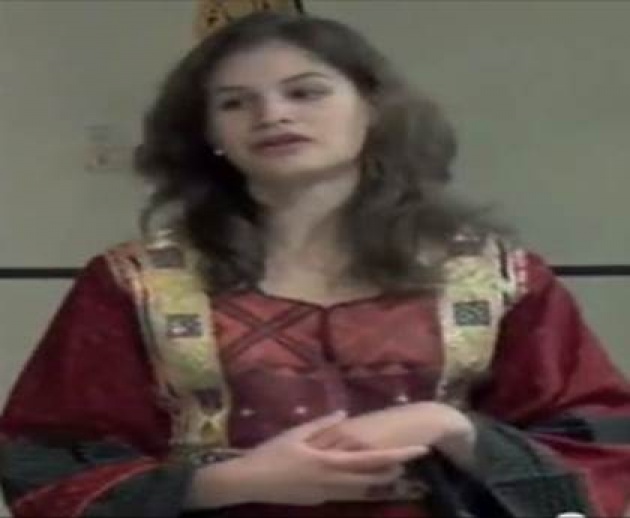
Angela Schöpke: It’s a pleasure to speak with you, Captain Zellem! I have so enjoyed discovering your books of Afghan Proverbs and how well they help us understand both Afghan culture and our common humanity. One of my favorite Afghan proverbs is “Joyenda yaabeenda ast.” جوینده یابنده است (The seeker is the finder). That’s exactly how I’m approaching my research fellowship on Afghan dance.
At one point I wanted to become a full-time dancer, and interned with a dance company in Dublin, Ireland called the Irish Modern Dance Theatre (IMDT). The dance company also was active in the Dublin community with an organization called SPIRASI. SPIRASI provides support to survivors of torture, many of whom are foreign refugees seeking asylum in Ireland.
One day I asked dance company director John Scott how IMDT had gotten involved with SPIRASI. The story he told was fascinating and I’ll never forget it. He described how a torture survivor under the care of SPIRASI came to the dance company and asked if the dancers would come to the SPIRASI center to do dance workshops with the survivors.

The torture survivor said that he, and many others like him, participated in SPIRASI counseling sessions where they were expected to re-live certain emotions through speech. But he said that in many of the torture survivors’ home cultures, they preferred to dance rather than speak when they were troubled, happy, sad, angry, or needed to express strong emotions. His idea was that dance professionals could help SPIRASI create a program using dance as a “safe space” where torture survivors and other refugees could express their emotions in a culturally appropriate way that was comfortable to them. This was the first time I realized that dance could be other things than simply performance. It also could be a way to heal.
FA: And then you returned to Northern Ireland to do formal research on dance and conflict resolution?
AS: Yes, I did. I did not let go of my dream to dance, but wanted to explore more deeply this idea that dance and the arts can be used to foster peace around the world. I received a fellowship from GWU to do just that, and returned to Northern Ireland to research a community dance event that survived the Northern Irish civil war. It is now officially supported by the government of Northern Ireland. I wanted to answer the research question of whether, how, and why this dance event had been successful in building positive relationships between conflicting Northern Irish groups during, and after, a very troubled time. I documented through this research that the dance event did indeed succeed in helping bridge differences and build supportive relationships between people in conflict.
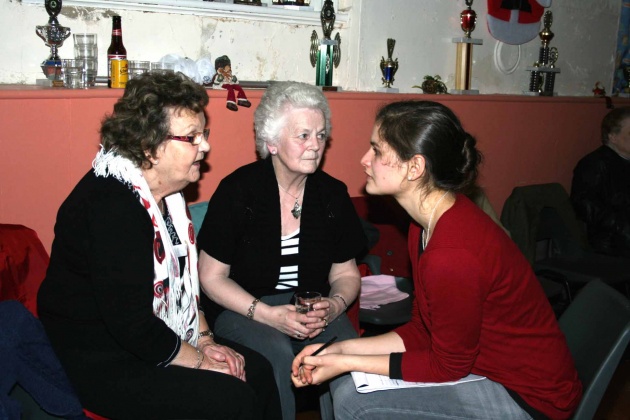
Conducting research on Irish dance in Gortgill, Ulster, Northern Ireland
FA: So how did your research in Northern Ireland transition into a project on dance and community building in Afghanistan?
AS: When I finished my research in Northern Ireland about a year ago, I returned to GWU and took a course at GWU that examined Afghanistan’s education system and how it worked: its strengths, weaknesses, and particularly its civic education curriculum. I made the connection with my interest in dance as a community builder, and began looking into Afghan dance in its many forms. I quickly found that while some written information exists, a formal study of Afghan dance has not been published since 1993. And we all know that a lot has changed in Afghanistan in the last twenty years. I also quickly learned that Afghanistan has an amazing tradition of dance as part of its heritage and cultural identity.
I began to wonder: If dance had helped in the process of rebuilding Northern Ireland after its many years of conflict, could the same be true for Afghanistan? Could the universal language of dance bring divided communities together in Afghanistan as it had in Northern Ireland, and help bring peace to the country? These are very intriguing and important questions. So I applied for and received a second fellowship from GWU to research the role and value of dance in Afghan communities around the world today. I’ll be traveling to Germany this month as part of this project to learn from the large Afghan-German diaspora and community there. It’s the largest in Europe. 
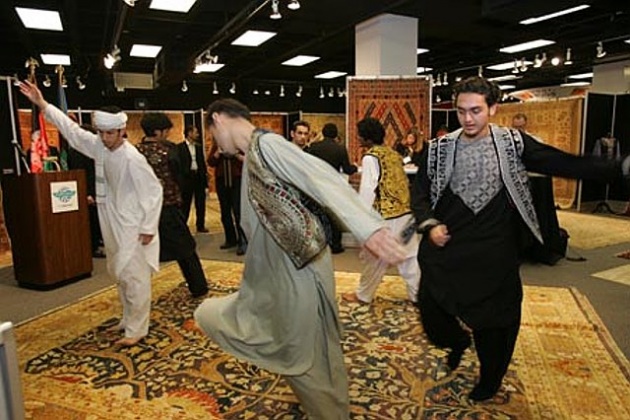
Men and women typically dance in separate spaces in Afghanistan
FA: So please tell us some of your thoughts about dance in Afghanistan.
AS: A good example that some Annex Press readers may recognize can be found in a scene from the great film Osama, released in 2003 and directed by Afghan director Siddiq Barmak. It won a Golden Globe in 2004 as “Best Foreign Language Film” and has won awards at Cannes and many other international film festivals. People who haven’t seen the film sometimes think it is about Osama bin Laden, but it has nothing to do with him. Osama is not an uncommon name in that part of the world. The film is about a girl living in Afghanistan under the Taliban regime who disguises herself as a boy named “Osama” so she can support her family. Osama was the first film to be shot entirely in Afghanistan since 1996, when the Taliban régime officially banned the creation of all films.
The scene I am referring to shows a group of women singing and dancing quietly inside a house. Someone tells them that the Taliban are coming. At that point, the women immediately stop singing and dancing, throw veils over their heads, and begin weeping as though grieving for a family death. This scene had an especially powerful impact on me. Because I had always had the freedom to dance the dances of my own cultural tradition, I hadn’t fully recognized that not having that freedom was a real possibility that exists in the world. This moment in the film struck me because it questioned my understanding of something that I held as particularly valuable to my life experience and that I had taken for granted.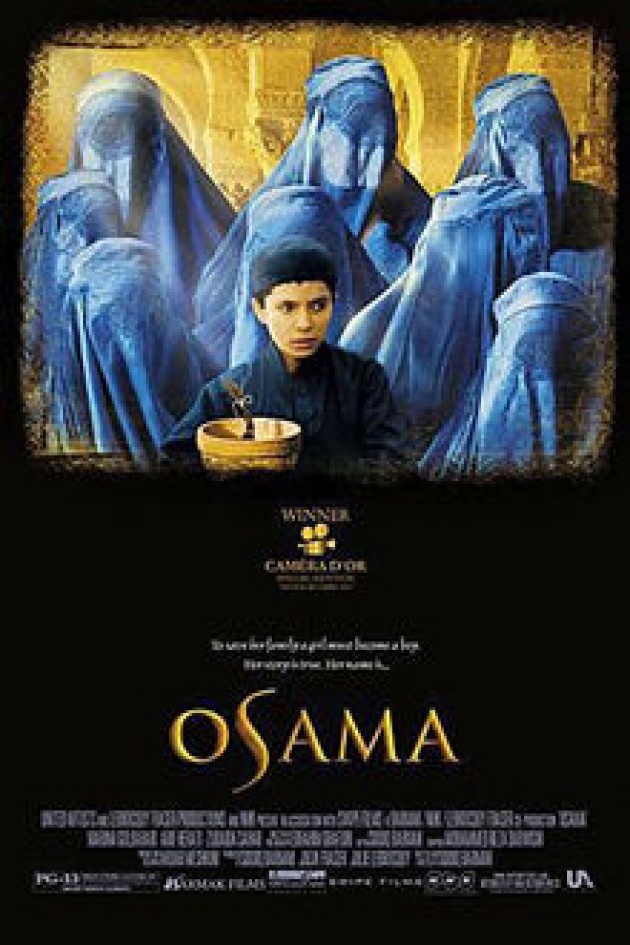
FA: It’s true that dance was prohibited by the Taliban, and is sometimes discouraged in other contexts in Afghanistan. Has your research explored these other contexts?
AS: Yes, I’ve found a number of explanations for this in both cultural and religious contexts. One perspective that often comes up in many variations is a religious interpretation that Islam forbids dancing. This argument is often grounded in verses of the Qur’an (such as Surat Luqman Ch. 31:6) which some Islamic scholars interpret to mean that music and dancing are prohibited by Islam. However, many other Islamic scholars say that these verses do not prohibit music or dance at all, but rather prohibit “debauchery” and “promiscuity” as part of any type of festivity.
With many different interpretations, there seems to be little consensus among Muslims as to whether dancing is indeed permitted or prohibited in Islam, and this includes dance practices in Afghanistan. Consequently, some groups do not dance at all. In other groups, dance is only practiced with genders separated inside or outside the home on very specific occasions. In still others, dance is used as a form of celebration or even worship. This is in some ways very similar to the cultural and religious contexts of dance in Northern Ireland, but is also very different in the social implications of each use of dance. This is something that I will thoroughly explore in my research. It’s complicated, and can be a sensitive subject for some people when talking about the religious aspect. But it’s important to try and understand the different perspectives, and the discussion needs to take place.
FA: As Afghanistan rebuilds, how do you see dance as important?
AS: I can see dance being important in a number of ways. As I saw in Northern Ireland, I think it can help in rebuilding a constructive sense of Afghan national identity and unity among ethnic and tribal groups. Just as samba is the national dance of Brazil, and the dabke is the de facto national dance of Jordan and other Arabic countries in the Levant, the attan (sometimes spelled as atan) is considered Afghanistan’s national dance. The attan, which is believed to have originated in the Pashtun regions of Afghanistan, has an intricate history of over 2000 years. It has a range of variations in how it is practiced across Afghanistan. With such a long, diverse and strong cultural history, the attan and other Afghan dances can be an important language with which to explore commonalities and differences across many boundaries of conflict as Afghanistan tries to rebuild national identity and work toward peace and security.
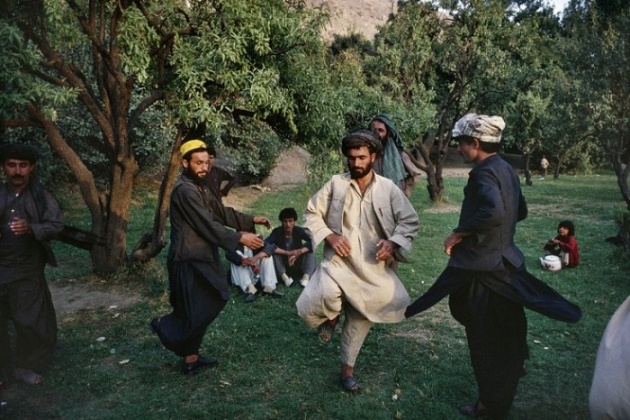 Pashtun men dance the attan at a picnic in southern Afghanistan
Pashtun men dance the attan at a picnic in southern Afghanistan
Despite many external cultural restrictions on dancing still in place, when it is practiced, Afghan dance can be very inclusive. Though men and women in many contexts do not dance together in Afghanistan in the present day, they can dance all they want as long as they are in separate spaces. All generations are welcome. Through promoting group participation, trust, and individual and women’s empowerment, I do think that Afghan dance traditions can be important to the future of a stronger and more peaceful Afghanistan.
FA: An interesting perspective. How would you see this happening?
AS: Well, dance is a language too. For example, people are finding that the language of Afghan Proverbs can be used as a cultural and national identity building tool. Social media can also be considered a language as well as a culture. I see the language of dance and the arts as able to play a recognized role in Afghanistan’s development of cultural and national identity too. Dance can help Afghanistan rebuild through an open dialogue and awareness about its rich heritage, tradition, and universality as a common language.
If, for example, information about the historical and cultural roots of dance in Afghanistan were paired with programs like the Afghan Development Project, which use modern Internet and social media technologies to link Afghan students with educational resources, it could be very powerful. Dance is a universal language and people enjoy doing it or watching it. If employed in a culturally appropriate way, dance can play an important role as an opportunity to explore the commonalities across divided communities within Afghanistan. And as it did in Northern Ireland, maybe it can help. That’s what my research is all about, and as far as I can tell no one has looked at dance in this way for Afghanistan before. 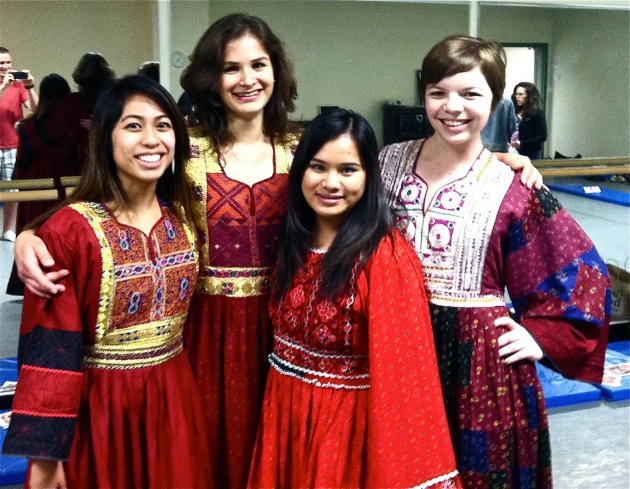
The 2012 Nowruz Dance Initiative in Washington, D.C.
FA: Please tell us about your Nowruz Dance Initiative and what you learned from it.
AS: The Nowruz Dance Initiative was a project organized between American youth in Washington, D.C. and Afghan youth in Kabul, Afghanistan to celebrate Nowruz (Persian New Year). Initially, it began with the idea that we would exchange dances. The U.S. youth group would compile a series of “American” dance movements to share with the Afghan youth group by video, and the Afghan youth group would compile a series of “Afghan” dance movements to share with the US youth group by video in return. I would then blend all movements together in one Afghan-American dance that would be performed for Nowruz 2012 in each group’s location (Kabul and Washington).
After exchanging dance movements and sharing the combined Afghan-American dance with the Afghan group, the full project could not be completed on the Afghanistan side for a variety of reasons. However, the US group did perform at an event in May 2012 honoring the unifying spirit of Nowruz, a holiday officially celebrated in twelve countries around the world. Though initially I had hoped both groups would be able to perform, the Afghan group’s inability to perform ended up being a great learning experience. In many ways it reaffirmed the reasons for researching the role and value of dance in Afghan communities. We need to better understand how we can build on the strength of the universal language of dance to build bridges across borders, between people all around the world.

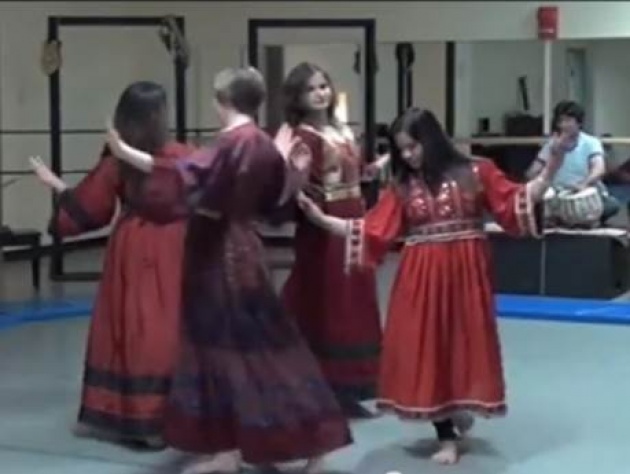
FA: Well, as the Afghan proverb says, “Qadr-e zar-raa zargar mey-danad.” (A goldsmith knows the value of gold). قدر زر را زرگر میداند And your training, research and personal experience has certainly shown you the value of dance for such efforts. It’s a very unique idea. What is your vision for the future of your research?
AS: Ideally, I’d love to see the world dancing. The deeper I go into this, the more I recognize that dancing is a far more complex topic than I realized when I began my research three years ago. I do believe that dance is a universal language, just like music, film, storytelling, poetry, proverbs, speech, sports, and math. There are many other universal languages too. As Shakespeare said in A Winter’s Tale, “Language in their very gesture.” My vision for the future of my research is to understand and work towards using dance and other universal languages to build positive relationships not only within Afghanistan, but around the world.
FA: Very thought-provoking and exciting. How can people help you with your research?
AS: As I mentioned earlier, my next step is to travel to Frankfurt, Germany for dance research with Afghan-Germans this month. I also will continue reaching out to learn from the Afghan-American community in the United States, especially in the Washington, D.C. area. At the moment I am in the process of seeking and developing key interview participants.
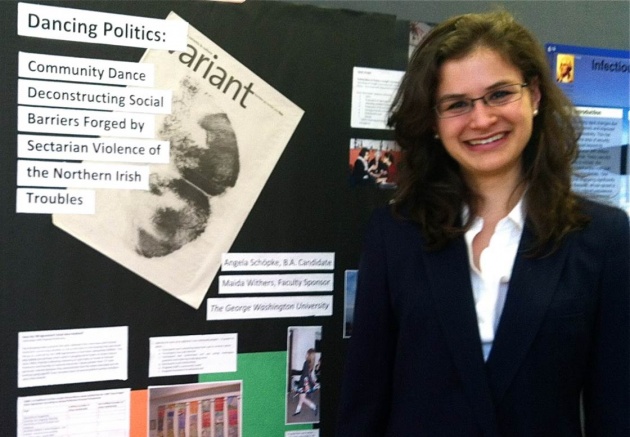
If any of your readers are of Afghan heritage, live in the Frankfurt or Washington areas (or know someone who does) and would be interested in sharing their knowledge and experiences with Afghan dance, I would love to hear from them! But with the Internet and social media I can have a good discussion on Afghan dance with anyone in the world. I find I learn something new almost every time. Anyone who would like to contribute can find me on Facebook, Twitter, or can contact me directly by email. Stay tuned for a website soon where you will be able to find comprehensive information about my research. In the meantime, the Nowruz Dance Initiative page can provide some information regarding some of my previous research on Afghan dance.
FA: It's a great research project and we’ll be following your progress with interest. Any final thoughts?
AS: In the end, as one of Zarbul Masalha’s wonderful Afghan proverbs says, “Dahan ba halwa guftan sheereen na-mey-shawad.” دهن به حلوا گفتن شیرین نمیشود (Your mouth cannot become sweet by saying “halwa”) Halwa is a traditional Afghan dessert, and this proverb means that you only can reach your goals by working hard, not by talking or slogans. That’s how I am approaching my research. I want it to be used to promote peace in the real world, not just as an academic exercise. It is only by working hard together that we can continue moving our world from divisions and conflict to positive relationships and peace.
Twitter: @afghansayings
 More of Edward Zellem's interviews with Afghan celebrities and thought leaders are coming soon.
More of Edward Zellem's interviews with Afghan celebrities and thought leaders are coming soon.
To be notified of new interviews, updates and articles, please visit here and click the green "Subscribe" button.



